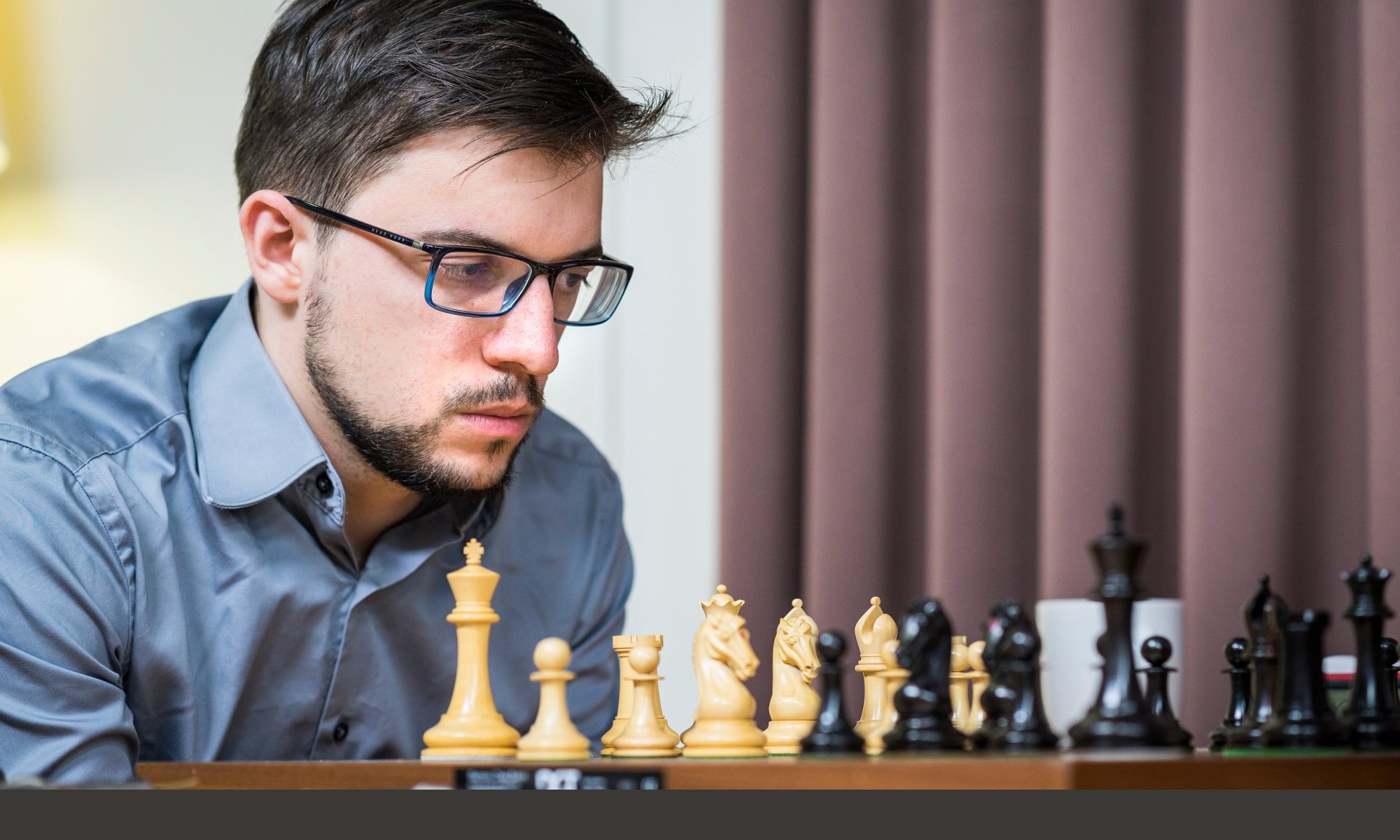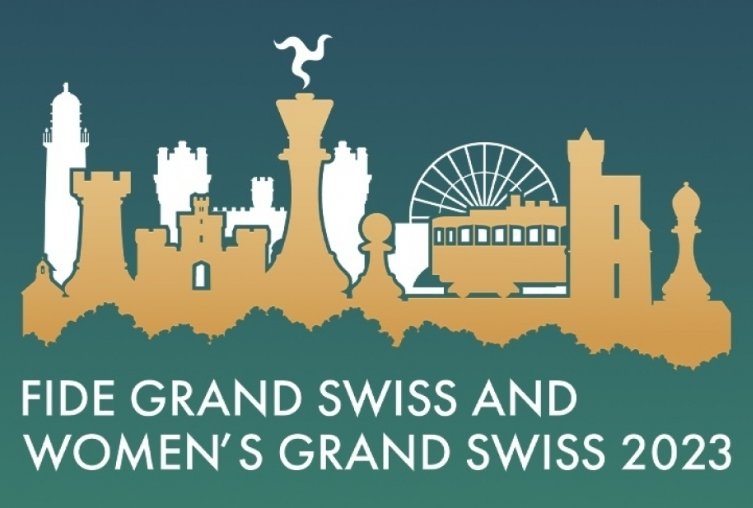The result of this tournament is of course a disappointment, as it was most likely my last shot at this World Championship cycle, and I couldn’t make the most of it (14-27th at 6.5/11).
When I arrived on the Isle of Man, I didn’t anticipate it was going to be so complicated for me physically. Because, unfortunately, I arrived sick, physically weak and with a constant cough. Although I’m not looking for excuses, it’s obvious that this was detrimental to my results in the first half of the tournament (2/5). And in such cases, unfortunately, there’s not much you can do…
But the truth is, if I take a step back, I have to say that not qualifying for the Candidates wasn’t really down to this tournament. In any case, my form over the first half of 2023 was really too erratic. As a result, I found myself out of the running for the Fide Circuit spot, and with a rating that made it virtually impossible to qualify by Elo: two of the four paths to the Candidates were therefore closed to me from the outset…
Let’s forget about the stakes for a moment, and revisit some interesting moments from my games on the Isle of Man!
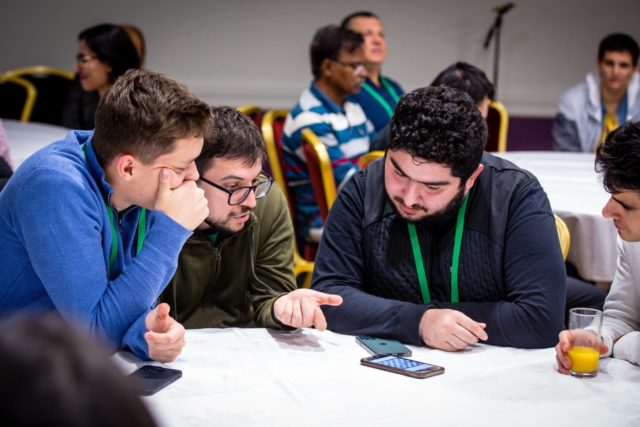
Analysing with colleagues (Esipenko, Maghsoodloo and Tari) (Photo: Fide).
Round 1 : Gledura (2633) – MVL 1/2
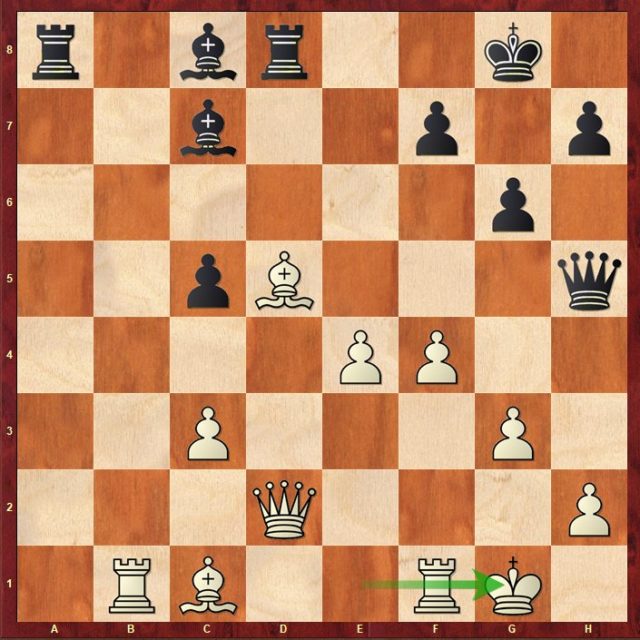
Here, I made a mistake by playing 21…Ra4?. I had calculated many lines where I sacrificed an exchange and thought I had enough compensation, but each time the computer indicates +1 or +2! Gledura could have taken the advantage with 22.c4!. I didn’t believe in this move because I missed the very strong 22…Rxc4 23.Qa2!, for example 23…Rxd5 24.Qxc4 and the compensations seem insufficient.
So it would have been better if I’d chosen the first move I’d considered, namely 21…Ba6 22.Rf2 Bc4 23.Bxa8 Rxd2 24.Bxd2. I wanted to continue here with 24…Bd3 (idea …c4 then …Qa5), but after 25.Ra1 c4 26.Be3 I thought white was better, as I can no longer play …Qa5, while both Bishops will be perfectly anchored on d4 and d5.
Admittedly, after 24.Bxd2, the machine indicates 24…Qg4! with the idea …h5-h4, and estimates that Black has enough play. But honestly, this isn’t the kind of line a human GM will willingly enter…
Round 5 : Saric (2647) – MVL 1-0
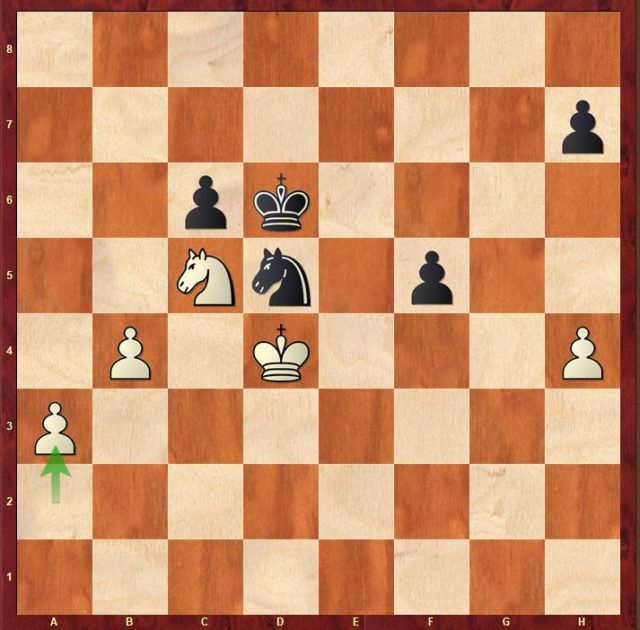
Clearly my worst game of the tournament, peppered with mistakes. The Knight’s endgame is much more complex than the computer’s assessment (0.00 😊) suggests, as it doesn’t take into account how difficult it is for black to defend.
Here we had just passed move 40, and I thought long and hard before playing the horrible 41…Kc7? based on a huge miscalculation. First of all, I spent some time trying to find a clear path to the draw by not giving ground to white’s King and playing a Knight move, like 41…Nf4 or 41…Nc7. Having seen nothing crystal-clear, I was drawn to 41…Kc7? on the basis of the variation 42.Ke5 f4 43.Ne6+ Kb6 44.Nxf4? Nxf4 45.Kxf4 Kb5 and the pawn endgame is drawn. Unfortunately, I completely missed 44.Nd4! and black is in zugzwang; the Knight can’t move because of the f4 pawn, and if black’s King retreats, b5! wins. A big blunder on my part, which perfectly reflects my level of form in the early rounds…
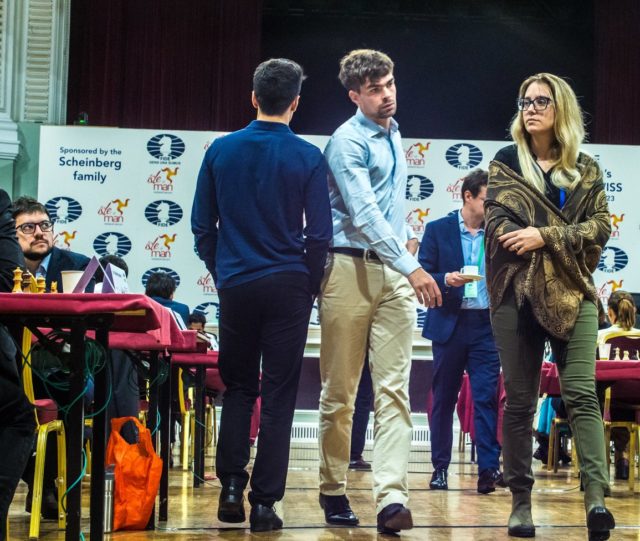
Round 6 : MVL – Idani (2633) 1-0
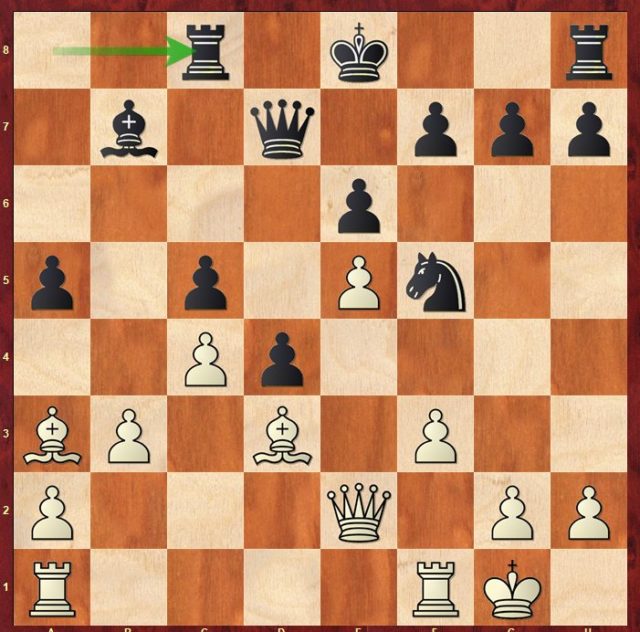
White’s position is preferable, but you have to take quick action to break through. In fact, I realized that I didn’t really have a choice, and was forced to play 20.Bxf5 exf5 21.e6! Qxe6 (21…fxe6 22.Qe5! shows the vulnerability of the c5 pawn) 22.Rfe1 Qxe2 23.Rxe2+ Kd7 24.Rae1. Despite the opposite-colored Bishops, the situation is tricky for black. The Fb7 is pretty, but hits the air; all endgames lose. For example 24…Rhe8 25.Rxe8 Rxe8 26.Rxe8 Kxe8 27.Bxc5 is absolutely hopeless – not all opposite-colored Bishops endgames are drawn 😊.
In the game, after 24…Kc6 25.Re7 a4 26.R1e5, the pressure quickly became too much.
Round 7 : Nguyen Thai Dai Van (2618) – MVL 0-1
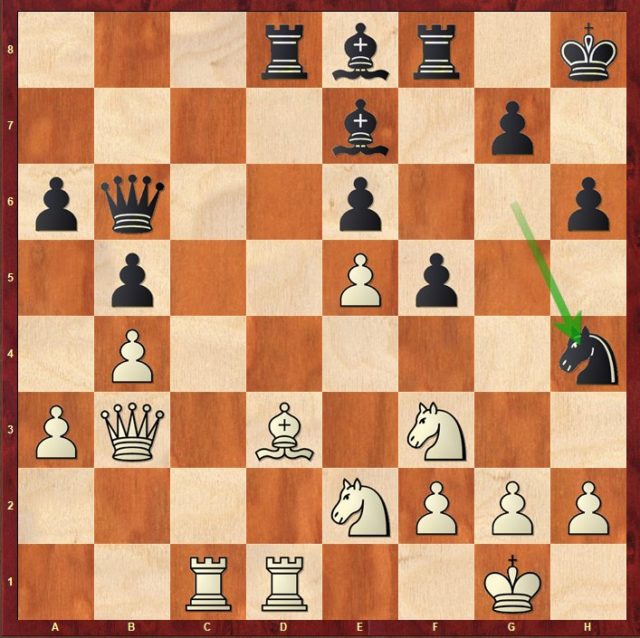
In this chaotic position, I was expecting 26.Ned4, and I had planned 26…Rxd4 27.Nxd4 Qxd4 28.Qxe6 Bg5 29.Bf1 Qg4, but after 30.h3, the position is not clear at all. Fortunately, he played 26.Nfd4? Bg5 27.Qxe6, which runs into the intermediate move 27…Qb7! 28.f3 Be3+ and white won’t have enough play for the piece.
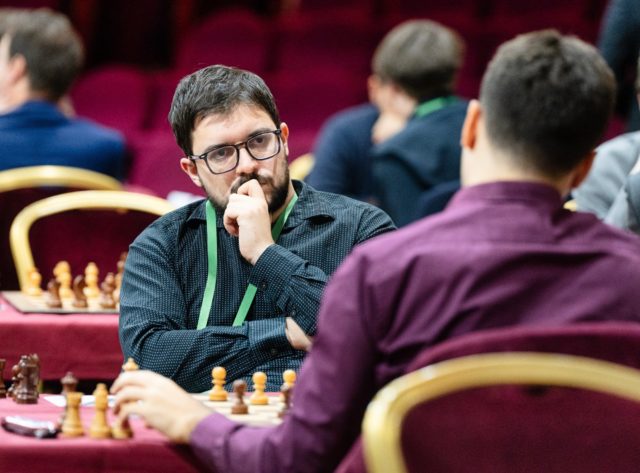
Round 8 : MVL – Pichot (2650) 1-0
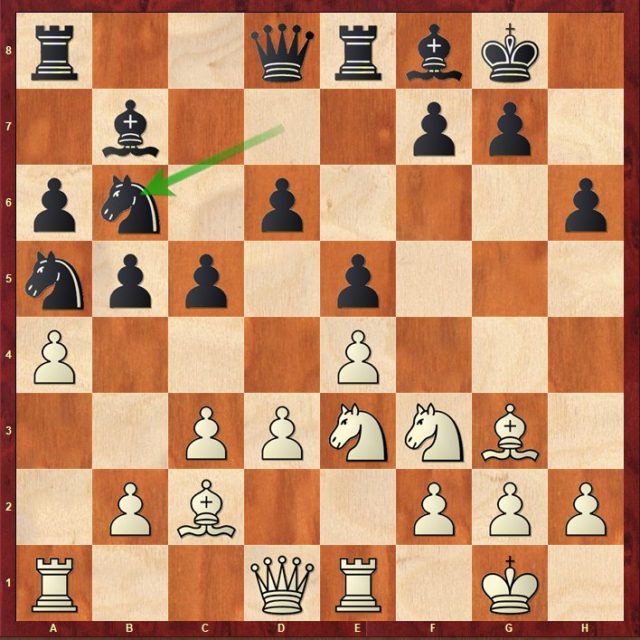
Black’s last move 17…Nb6 may look strange, as it seems to be abandoning the Kingside (with one Knight on a5, the other on b6 and the bishop on b7!). I replied 18.Bh4! Be7 19.Bxe7 Qxe7 20.b4 cxb4 21.cxb4 Nc6 22.a5 as I felt I was gaining the advantage. The alternative was to take advantage of the remoteness of the black’s minor pieces to play the attack with 19.Nf5 Bxh4 20.N3xh4 followed by the switch of the Queen to g4 or h5. But I didn’t find this line that strong; I thought it was less dangerous for him because he’d play …Kh7 and then …Qf6, and in the end, you could wonder what my Knights were really doing? Admittedly, it was possible to reinforce the attack with Re3, but I wasn’t at all sure that would be a good idea; my Bishop on c2 doesn’t attack, black will quickly have …Kh7, …Qf6 and …g6, and I would need to prove that I’ve got something.
In the game, after 22…Nd7, I intended to play 23.Qd2. But 23…Nd4 seemed strong, e.g. 24.Nxd4 exd4 25.Nf5 Qf6 26.f4 Rac8 27.Qf2 Nb8! 28.Nxd4 Nc6 29.Nxc6 Rxc6 didn’t seem clear at all to me. So I changed my mind to 23.Nd5, but after 23…Qd8 24.Bb3 Ne7! black was on the brink of total equalization.
A few moves later…
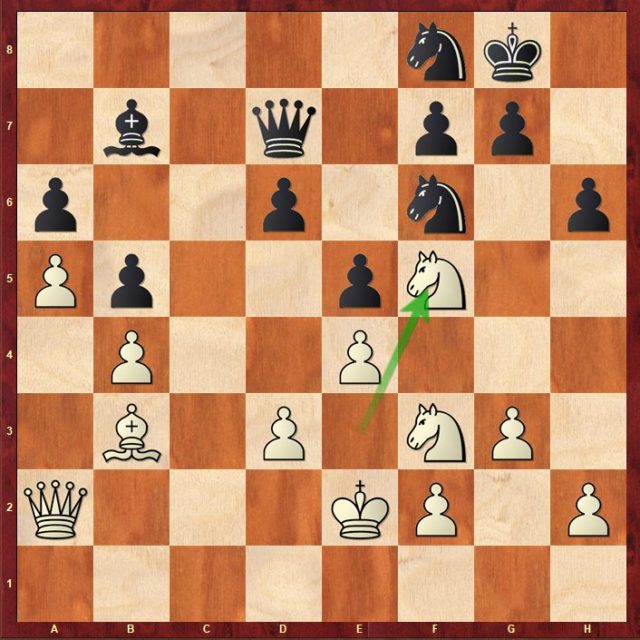
Here, I’m threatening 35.Bxf7+! followed by a fork on d6. Pichot played 34…Ne6, which suited me because I wanted 35.Bxe6 fxe6 36.Ne3, which leaves white free to torture the position for a very long time. Instead of 34…Ne6, I’d seen that 34…d5? didn’t work because of 35.Nxe5 Qc7 36.f4, and he can never take e4 because of Bxf7+ once again. But mostly, I spent time calculating the plausible 34…Bxe4!? 35.dxe4 Nxe4 36.Qc2 (not 36.Bxf7+? Kh8 with chaos on the board! ; 36.Ke3! Qxf5 37.Nh4 Qh7 38.Bc2 was strong too, but I didn’t see it during the game) 36…Qxf5 37.Ke3 d5 38.Bxd5 Nxg3 39.Qxf5 Nxf5+ 40.Ke4 g6 41.Nxe5 Kg7 42.Nxf7 and the endgame is completely winning because of the a6 pawn that will fall.
The Spanish player didn’t crumble under pressure, until the next position:
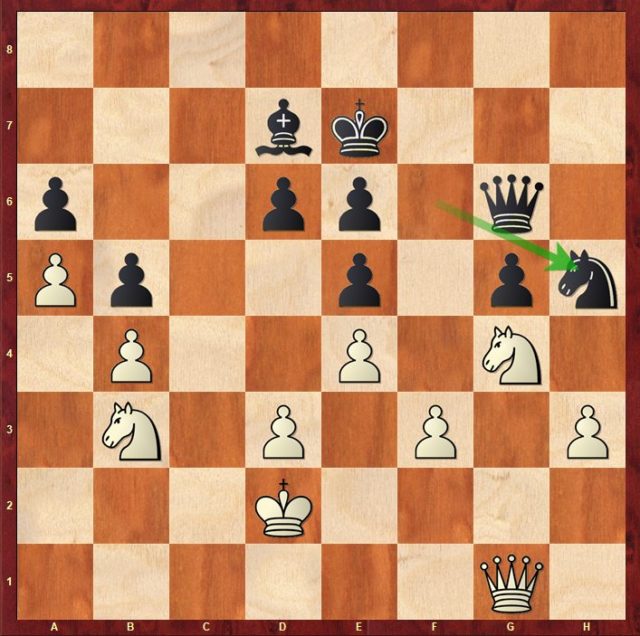
I realized that activating both Queens with 48.Qa7 Qf7 would probably lead to a draw. So I spent a lot of time, and came up with 48.d4! exd4 49.e5 which is strong, at least in practice. Perhaps it was still a draw after 49…d5 50.Qxd4 Nf4 51.Qc5+ Kf7 52.Qc2! Qxc2+ 53.Kxc2 Nxh3 54. Kd3 Ke7 55.Kd4 had he played 55…Kd8 now? In any case, the difficulty of defending this endgame in practice was such that after the natural but erroneous 55…Nf4? 56.Nf2! I was sure I was going to win!
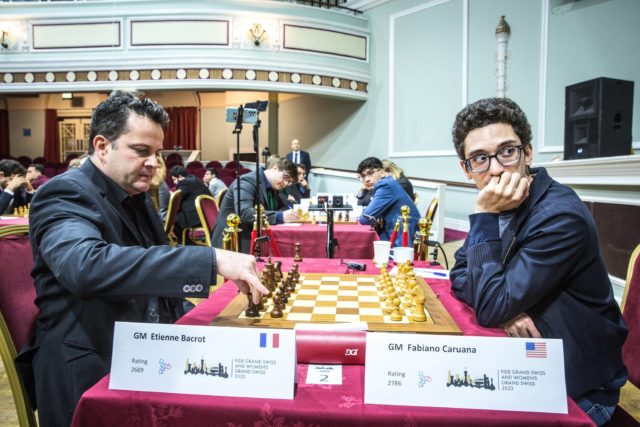
Round 9 : Sindarov (2658) – MVL 1/2
1.e4 c5 2.Nf3 d6 3.Nc3 Nf6 4.Bb5+ Bd7 5.Qe2. In the 4th round, I noticed that India’s Nihal Sarin had played this minor line (against Ter-Sahakyan, 1-0). I analyzed quickly and saw that after 5…a6, black equalizes. But in this game, I didn’t want to draw, as I had to continue my rush of victories to have any hope. So I took my time and chose 5…g6, then after 6.e5 dxe5 7.Qxe5!? paused againto find 7…Nc6! which is the right move, sacrificing the c5 pawn.
Soon the game took an ultra-complicated turn, and Sindarov even used 48 minutes to play 12.Ne5 😊.
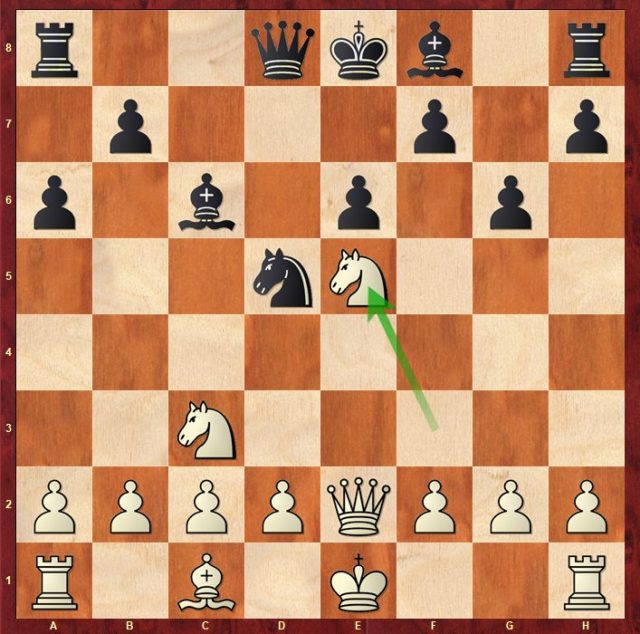
After 12…Nxc3 I calculated a rather crazy line. Given that my opponent had thought for so long, I suspected there was a reason: 13.dxc3 Bxg2 14.Rg1 Qd5 15.Ng4 0-0-0 (I know the machine gives 15…Qf3!, but no human accepts the kamikaze position resulting from 16.Rxg2 Qxg2 17.Nf6+) 16.Ne3 Bf3 17.Nxd5 Bxe2 18.Nb6+ Kc7. Sindarov stopped there, but I pursued the variation and found 19.Bg5! and black’s problems continue, e.g. 19…Re8 20.Kxe2 Kxb6 21.Rad1 with d-file control. Having discarded this variation, I would probably have fallen back on 14…Bc6, but after 15.Nxc6 bxc6 16.Qe5! it was perhaps even worse, which I hadn’t really realized on the board.
But Sindarov eventually took with the other pawn, 13.bxc3, and after 13…Bxg2 14.Rg1, I chose 14…Bc6 15.Nxc6 bxc6 and that’s my only regret in this game. I could also have played 14…Qd5 15.c4 Qe4, but after 16.d3, I thought I was slightly worse. On the other hand, if I’d seen it, and unfortunately I didn’t, I would have played the somewhat weird move 14…Bh3!?. It’s a pity because I felt there was something there, but I couldn’t find it. Black threatens to consolidate with …Bf5, and after 15.Qf3 Qc7 16.Nxf7 Qxf7 17.Qxh3 Bd6, he clearly has good compensation for the pawn.
In the game, after 16.Qe5 Rg8 17.Rb1, I opted for 17…Bg7 because I was afraid of a specific line after the more normal 17…Bd6: 18.Qe4 Qc7 19.d4 Kd7 (the natural square to connect the Rooks) 20.Qf3 f5 21.Qh3 Rg7 22.Bh6 Rf7 23.Ke2, and I thought my position was not good at all, which is probably not true.
After a few other twists and turns, the game ended in a draw on the 31st move, putting a definitive end to my remontada…
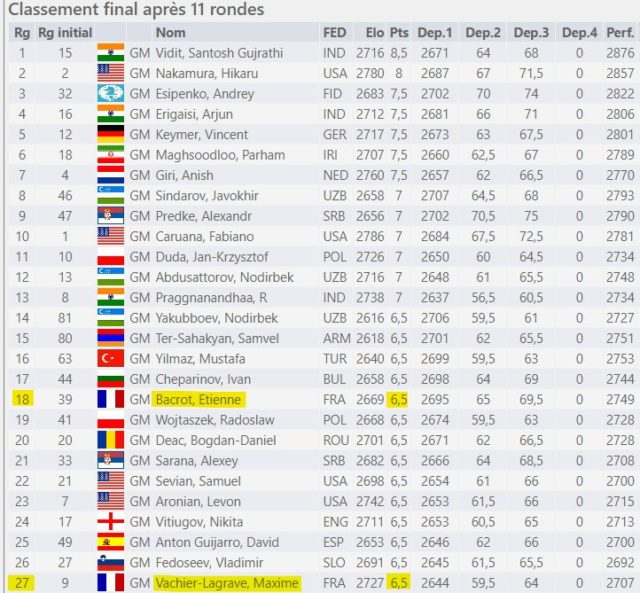
Of course, I’m disappointed with the result, but frankly, I felt I hadn’t been able to defend my chances to the full by not being 100% physically. The good news is that I don’t have time to lament, as the American tour begins on November 14, with the last two tournaments of the Grand Chess Tour 2023 (St-Louis Rapid & Blitz, then Sinquefield Cup), followed a few days later by the Champions Chess Tour Finals in Toronto.
I arrived in New York on November 8, and had a few days to do several exhibitions in Manhattan and Connecticut, which also allowed me to acclimatize to the time difference before arriving in St. Louis.
Maxime’s games:
As soon as he realized that his arrival in the United States preceded by a few hours the first game of the San Antonio Spurs and their new French star Victor Wembanamya in New York, Maxime immediately booked his ticket for this NBA evening at Madison Square Garden. A fan of many sports, he never misses the opportunity, whenever it arises and his schedule allows, to attend a sporting event taking place wherever chess destiny has taken him!
